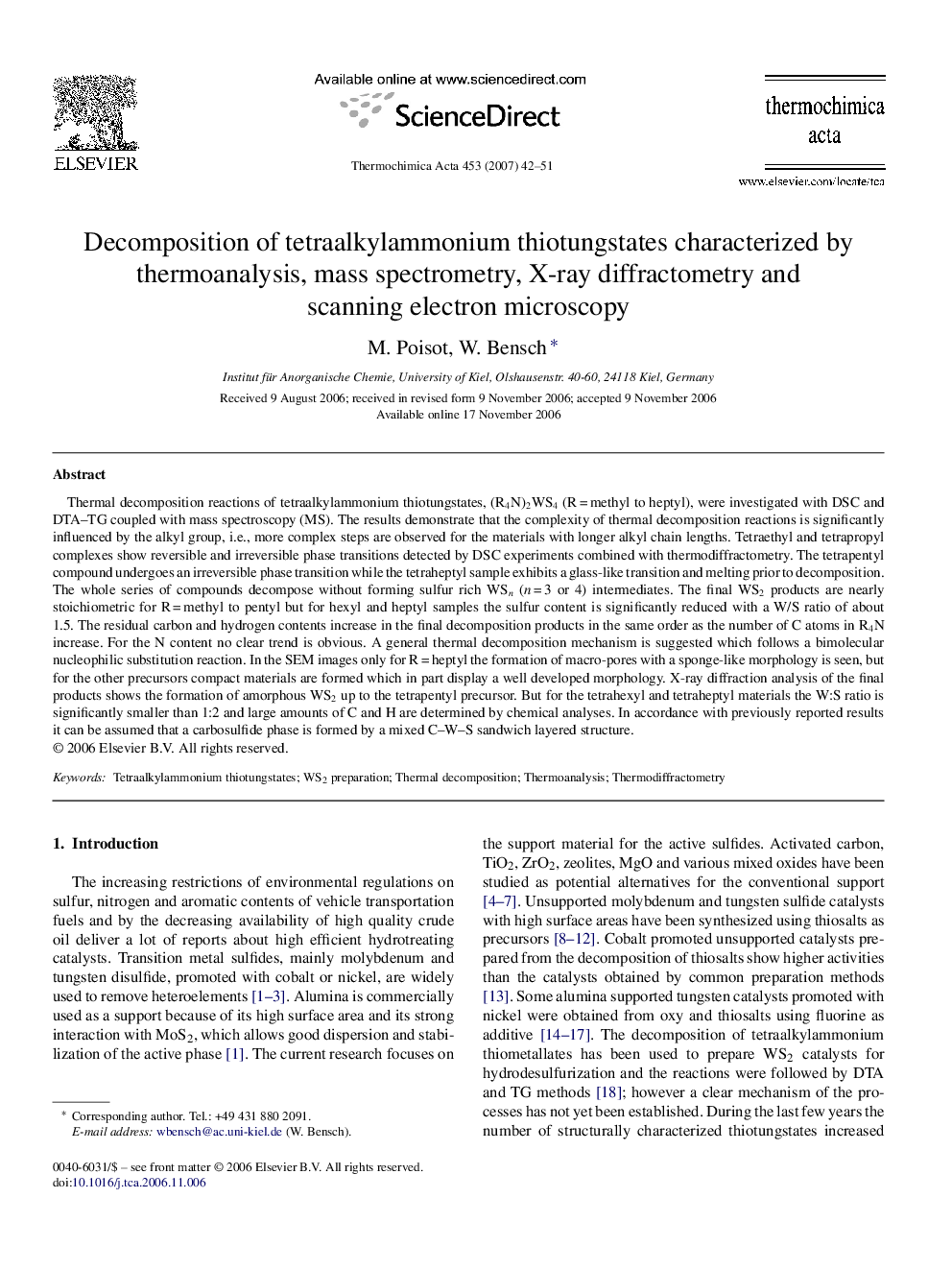| کد مقاله | کد نشریه | سال انتشار | مقاله انگلیسی | نسخه تمام متن |
|---|---|---|---|---|
| 675945 | 887742 | 2007 | 10 صفحه PDF | دانلود رایگان |

Thermal decomposition reactions of tetraalkylammonium thiotungstates, (R4N)2WS4 (R = methyl to heptyl), were investigated with DSC and DTA–TG coupled with mass spectroscopy (MS). The results demonstrate that the complexity of thermal decomposition reactions is significantly influenced by the alkyl group, i.e., more complex steps are observed for the materials with longer alkyl chain lengths. Tetraethyl and tetrapropyl complexes show reversible and irreversible phase transitions detected by DSC experiments combined with thermodiffractometry. The tetrapentyl compound undergoes an irreversible phase transition while the tetraheptyl sample exhibits a glass-like transition and melting prior to decomposition. The whole series of compounds decompose without forming sulfur rich WSn (n = 3 or 4) intermediates. The final WS2 products are nearly stoichiometric for R = methyl to pentyl but for hexyl and heptyl samples the sulfur content is significantly reduced with a W/S ratio of about 1.5. The residual carbon and hydrogen contents increase in the final decomposition products in the same order as the number of C atoms in R4N increase. For the N content no clear trend is obvious. A general thermal decomposition mechanism is suggested which follows a bimolecular nucleophilic substitution reaction. In the SEM images only for R = heptyl the formation of macro-pores with a sponge-like morphology is seen, but for the other precursors compact materials are formed which in part display a well developed morphology. X-ray diffraction analysis of the final products shows the formation of amorphous WS2 up to the tetrapentyl precursor. But for the tetrahexyl and tetraheptyl materials the W:S ratio is significantly smaller than 1:2 and large amounts of C and H are determined by chemical analyses. In accordance with previously reported results it can be assumed that a carbosulfide phase is formed by a mixed C–W–S sandwich layered structure.
Journal: Thermochimica Acta - Volume 453, Issue 1, 25 January 2007, Pages 42–51